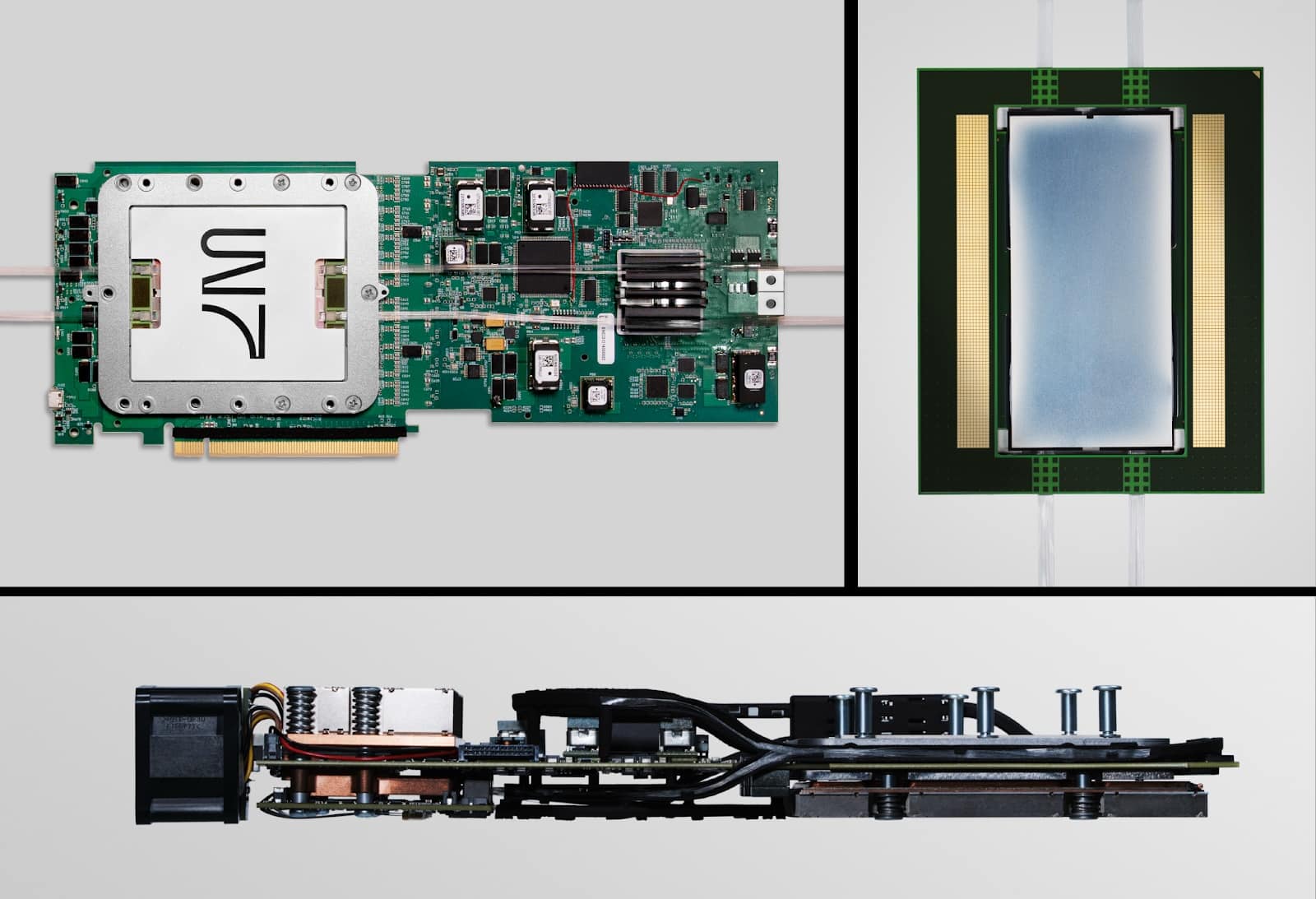The company introduces two key advancements that promise to eliminate bottlenecks in data centers and accelerate the development of next-generation artificial intelligence models.
The American company Lightmatter, a leader in photonic computing, has announced the launch of two new products that could transform the way data centers dedicated to artificial intelligence are built. These are the Passage M1000 and the Passage L200, two innovative chips based on 3D photonics that promise to solve one of the industry’s biggest challenges: bandwidth scalability.
Both products were unveiled at the Optical Fiber Conference held in San Francisco, where Lightmatter showcased the potential of its Passage platform, the first 3D stacked photonic architecture designed to connect thousands of processors at the speed of light.
M1000: The Photonic Superchip for the Era of Foundation Models
The Passage M1000 stands out as an active 3D photonic interposer that breaks the limitations of conventional electrical connections. With more than 4,000 mm², this chip achieves a total optical bandwidth of 114 Tbps and allows for the integration of up to 1,024 SerDes electrical channels in a single package.
Thanks to its architecture with 256 optical fibers and an innovative system of reconfigurable waveguides, the M1000 enables the connection of thousands of graphics processing units (GPUs) within a single network domain. This capacity makes it a crucial component for training large-scale AI models more quickly and energy efficiently.
Among its most noteworthy features are:
- 56 Gbps transmission per channel (NRZ)
- Dense wavelength division multiplexing (WDM) network with 8 channels per fiber
- Ability to dissipate up to 1.5 kW of power in a 7,735 mm² package
- Compatibility with optical fiber and large-scale assembly thanks to collaboration with partners like GlobalFoundries and Amkor
L200 and L200X: Co-packaged Optics to Break Edge Limits
The second major announcement from Lightmatter is the Passage L200, which becomes the world’s first commercial 3D co-packaged optics (CPO) product. It’s available in two versions: L200 (32 Tbps) and L200X (64 Tbps), designed to integrate with next-generation XPUs and switches.
Unlike current solutions limited by connections located at the edges of the chip (“shoreline”), Lightmatter’s architecture allows optical input/output to be distributed across the entire surface of the chip. This results in a modular solution, compatible with the UCIe chiplet-to-chiplet interface, capable of reaching over 200 Tbps per package, reducing AI training times by up to 800%.
Main specifications of the L200/L200X:
- UCIe interfaces at 32 Gbps with 320 multi-protocol SerDes
- NRZ transmission at 56 Gbps (L200) and PAM4 at 106/112 Gbps (L200X)
- Support for 16 WDM wavelengths per fiber (up to 1.6 Tbps per fiber)
- Design compatible with large-scale manufacturing, with partners like GlobalFoundries, ASE, and Amkor
A New Era for AI Data Centers
Nick Harris, founder and CEO of Lightmatter, stated that “scaling bandwidth is currently the biggest bottleneck for the advancement of AI. With the M1000 and L200 chips, we are redefining the limits of large-scale data processing.” Meanwhile, GlobalFoundries and Alphawave Semi, strategic partners of Lightmatter, have emphasized the importance of this collaboration in accelerating the market arrival of highly efficient and scalable solutions.
Industry analysts see these developments as a strong commitment to overcoming the physical limitations of traditional electronics. In the words of Andrew Schmitt, founder of Cignal AI, “co-packaged optics is an inevitable solution in AI data centers, and Lightmatter has taken a bold step toward that future.”
The M1000 is expected to be available by summer 2025, while the L200 and L200X will enter the market in 2026. Both will be accompanied by Guide, the integrated laser light engine developed by the company to ensure a robust and efficient optical supply.
Conclusion
The photonic revolution is no longer a long-term promise. With the M1000 and L200, Lightmatter demonstrates that it is possible to build faster, more scalable, and sustainable AI infrastructures. Its vertical integration approach—from photonic components to 3D packaging—could mark the beginning of a new era in high-performance computing.

